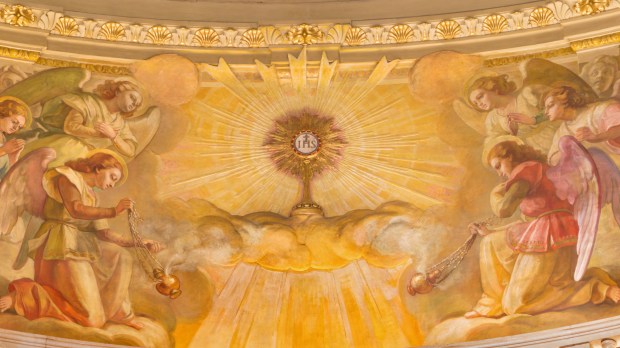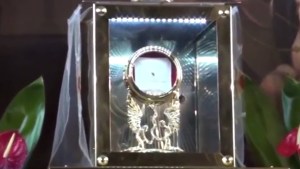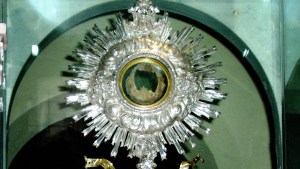The Catholic Church teaches that Jesus is truly and substantially present under the appearance of bread and wine in the Eucharist.
It is not a “symbolic” presence, but a true and “real” presence; Jesus is there, as he was when he walked the earth.
This is a difficult teaching for many as it surpasses reason and requires a strong faith and trust in God.
St. Paul VI reflected on this reality in his encyclical Mysterium Fidei.
And so we must approach this mystery in particular with humility and reverence, not relying on human reasoning, which ought to hold its peace, but rather adhering firmly to divine Revelation.
St. John Chrysostom who, as you know, dealt with the Mystery of the Eucharist in such eloquent language and with such insight born of devotion, had these most fitting words to offer on one occasion when he was instructing his faithful about this mystery: “Let us submit to God in all things and not contradict Him, even if what He says seems to contradict our reason and intellect; let His word prevail over our reason and intellect. Let us act in this way with regard to the Eucharistic mysteries, and not limit our attention just to what can be perceived by the senses, but instead hold fast to His words. For His word cannot deceive.”
If Jesus said to his apostles that he is the “bread of life,” and that we must “eat” him, we need to trust that Jesus wasn’t lying or speaking symbolically.
He truly wanted us to eat the bread that he will give to us.
The scholastic Doctors made similar statements on more than one occasion. As St. Thomas says, the fact that the true body and the true blood of Christ are present in this Sacrament “cannot be apprehended by the senses but only by faith, which rests upon divine authority. This is why Cyril comments upon the words, This is my body which is delivered up for you, in Luke 22, 19, in this way: Do not doubt that this is true; instead accept the words of the Savior in faith; for since He is truth, He cannot tell a lie.”
If you find yourself having difficulty with believing in the Eucharist, then ask God for help. Only he can provide the faith and trust that we need to take Jesus at his word that he is there under the appearance of bread and wine.



